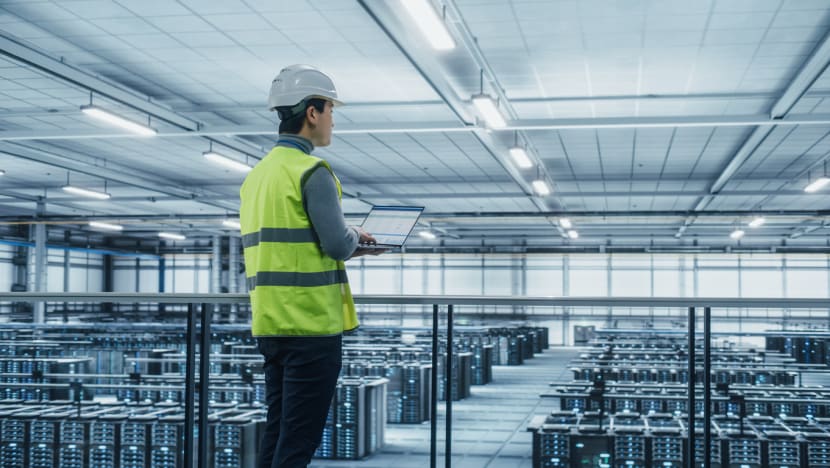Climate activists call for greater scrutiny of environmental impact of AI boom
So far, there has been little discussion of the expanding carbon footprint of AI or how to mitigate its impact.

File photo of a data centre. (Photo: iStock/gorodenkoff)

This audio is generated by an AI tool.
ROME: Italy, which holds the rotating presidency of the Group of Seven (G7) this year, has made it a priority to look at the development of “governance mechanisms” for artificial intelligence.
The technology has been highlighted by the informal grouping of the world's seven largest so-called advanced economies as a tool that can help address development challenges.
But so far, there has been little discussion of the expanding carbon footprint of AI or how to mitigate its impact.
DEMANDS OF RUNNING AI TASKS
The setting of guardrails for AI will be discussed when G7 leaders meet for a key summit in Italy from Thursday (Jun 13) to Saturday. Other topics on the agenda include boosting support for Ukraine and rerouting key supply chains away from China.
Climate activists said the environmental impact of AI also merits attention.
This comes as training and running AI systems requires a significant amount of energy. Because of this, growing demands could end up translating into more greenhouse gas emissions.
Data centres, which are effectively warehouses with lines of servers that help to power AI and the internet in general, account for about 1 per cent to up to 5 per cent of global greenhouse gas emissions, according to different reports.
Observers said the true impact of these facilities, which also use vast amounts of water for cooling, and create noise pollution, is hard to gauge.
CNA visited one such data centre operated by Italian cloud computer provider Seeweb, where servers power cloud computing and AI services. The temperature at the facility is carefully controlled so the servers do not overheat.
Mr Roberto Nardone, director of Seeweb, said while the company is expanding fast, it is also trying to become greener.
“In Italy, it’s well-known that we are behind in terms of broadband internet transport infrastructure,” he said.
“This is slowing down the expansion of data centre development a bit.”
Mr Nardone noted that there is a big demand for quality in the market.
“We're focusing mainly on energy efficiency and lower environmental impact,” he added.
HIDDEN COST OF AI BOOM
The recent AI boom is driving fierce competition for data centre services across Europe, but it is also adding to the sector's carbon footprint.
The International Energy Agency (IEA) said that data centres, cryptocurrencies and AI accounted for 2 per cent of global electricity usage in 2022. This figure could double by 2026, it added.
“Right now, among IT companies - and here I’m talking about Italy - only 10 per cent are paying enough attention to energy saving and renewable energy sources,” said Professor Livio De Santoli, vice rector for sustainability at the Sapienza University of Rome.
Among the remaining companies, 40 per cent have expressed interest in taking some action, while 50 per cent say they are not doing anything, he added.
“This cannot be accepted,” said Prof De Santoli.
“We must have more training, more information so that everyone today - which is the critical moment - can begin to plan reductions in energy consumption.”
















